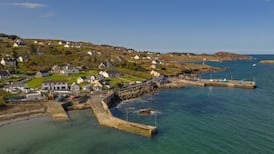About 56,000 homes, farms and businesses remained without a power supply on Saturday, down from a peak of 768,000 following the unprecedented impact of Storm Éowyn.
As of 12.30pm, ESB Networks had restored supply to 712,000 customers, it said.
The group said it was reinforcing its “vital warning” around public safety as the group continues the restoration of supply following the storm.
“We still have many faults on the electricity network and have been made aware of several instances of potentially very dangerous incidents where members of the public have unknowingly approached fallen electricity infrastructure, particularly in the worst-impacted areas of the country,” it said.
Heat and rains increase risk of disease as Myanmar earthquake death toll continues to rise
Business owners in the Clarinbridge flood zone: ‘There is now always the risk that it will happen again’
Myanmar earthquake: Death toll hits 1,700 as hundreds remain trapped or missing
Tonga earthquake: Magnitude 7 strikes south Pacific islands
“Following a significant weather event like Storm Éowyn, fallen debris can prevent people from seeing hidden risks such as wires entangled into trees and branches.
“If you come across fallen wires or damaged electricity network, never, ever touch or approach these as they are live and extremely dangerous.”
Works to reconnect premises left without electricity are not due to be completed until Thursday, as ESB crews bolstered by increasing support from abroad enter the “most difficult phase of restoration”.
The ESB has now entered the low-voltage restoration phase, where networks serving individual homes and smaller groups of customers, primarily in rural areas where there is “substantial damage” on the ground, are being repaired or rebuilt.
Approximately 3,000 network technicians, including more than 400 from abroad, are deployed, focusing on key areas.
The north and west, including Galway, Cavan, Leitrim and Mayo, remain among the worst affected.
Technicians from abroad are continuously arriving. A crew of 25 was due from Scotland on Friday, while 50 technicians are due to arrive from Germany this weekend.
The majority of the remaining outages are in rural areas, where paths must be cleared to access networks requiring complete rebuilding in some cases due to significant damage.
This is the most difficult phase of power restoration as, in some cases, crews of between 10 and 30 technicians are spending days restoring power to one customer at a time.
Taoiseach Micheál Martin told reporters in Cork on Friday that he “fully understands the anger and frustration” of people who have gone without electricity for a week following Storm Éowyn.
“Obviously, as you go more rural [for line repairs] it gets more challenging. The numbers you can bring back [to the grid] with every repair is smaller.”
Mr Martin said a meeting took place on Friday to “evaluate the impact of the storm” and to consider related issues that have to be addressed.
“I have already asked for work to be done to accelerate investment in the [energy] grid – to future-proof it and make it more resilient,” Mr Martin said.
The Fianna Fáil leader said the number and severity of storms has increased over the last decade, and climate change is “having an impact to a significant degree on our country”.
- Sign up for push alerts and have the best news, analysis and comment delivered directly to your phone
- Join The Irish Times on WhatsApp and stay up to date
- Listen to our Inside Politics podcast for the best political chat and analysis











